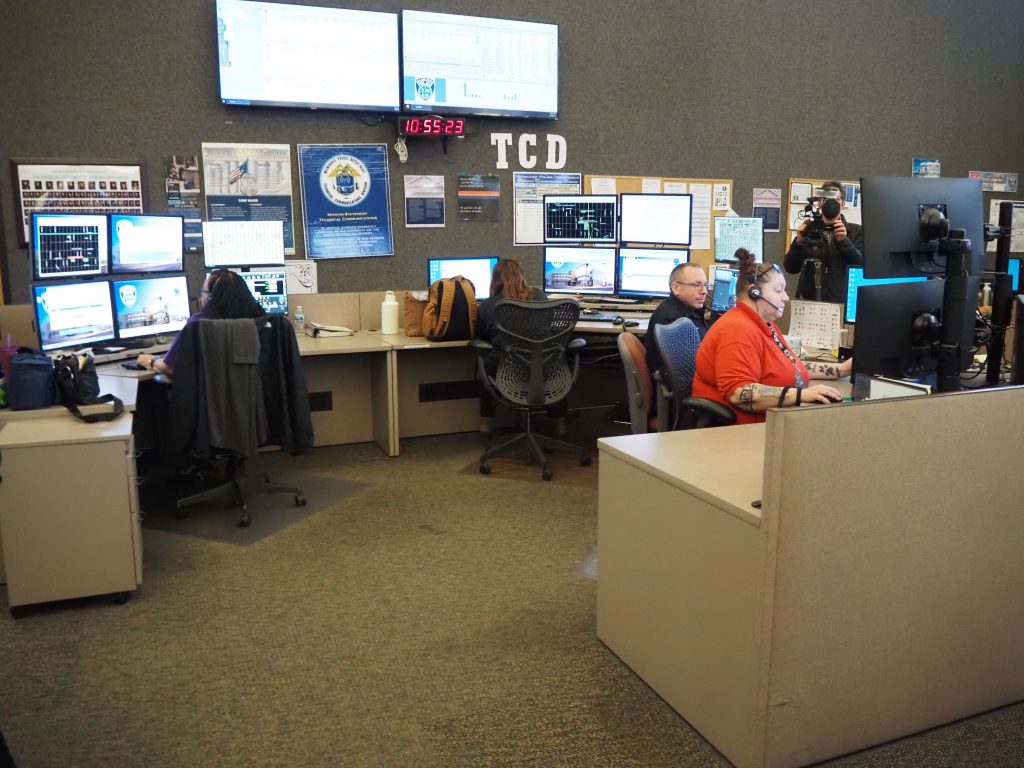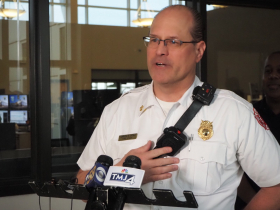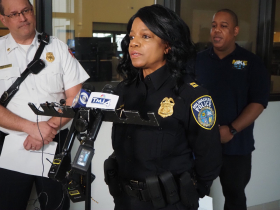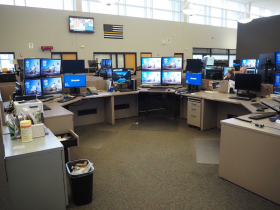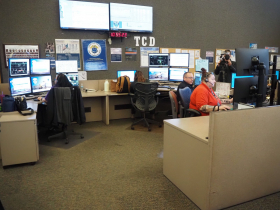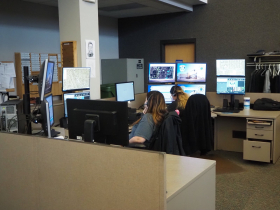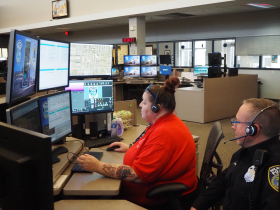Inside Milwaukee’s 911 Center
Some two dozen MPD employees handle more than 1 million calls per year. City plans reorganization of system
Tucked away on an upper floor of a west-side police station sits the nerve center of Milwaukee’s emergency response system.
The setup resembles a Wall Street trading floor with at least four computer monitors at each desk, low cubicle walls and dozens of intently focused workers glued to their screens while they talk into headsets.
A call for an emergency in progress? It’s quickly entered so a dispatcher knows where to send police officers. No caller on the line? It’s entered into a redial queue for another telecommunicator to check on. Non-emergency? The caller is referred to the appropriate source. Fire or health emergency? For now, the call is routed to the Milwaukee Fire Department (MFD) dispatch center located in an adjacent room.
In phases starting later this year, MPD and MFD will merge their operations into a new Department of Emergency Communications and create a unified call center. The vision is for a single worker to be able to take a call from start to finish, allowing the city to meet a national standard of answering 90% of calls within 10 seconds.
“There are massive investments in technology that are about to go live,” said Fire Chief Aaron Lipski during a tour of the facility Friday.
The Common Council and Acting Mayor Cavalier Johnson recently approved a 26% pay increase, boosting annual starting pay for telecommunicators to $55,760.90 from $44,192.46. The more senior dispatcher role saw a 29% increase to $64,125.10. City residents receive a 3% increase in that pay level.
“We can finally pay our folks what they are worth for the horribly difficult work they do,” said Lipski.
MFD has been relying on mandated overtime. “This has been very, very difficult,” said the chief.
“It is a moment’s notice that you are mandated and you’re forced to work 16 hour days back to back,” said lead MFD dispatcher Jasmine Salley. She characterized the job as emotionally draining, but rewarding as everyone works as a team to help the callers.
MPD Captain Michelle Haywood said the workers are the forgotten heroes of public safety.
Telecommunicator Elisa Marquez has been with MPD for 20 years. “There are no normal days,” said Marquez. “It’s never the same.” She enjoys the job and said it is well suited for people with tough skin and a desire to help. Marquez can also put her ability to speak Spanish to use, handling calls where the caller cannot speak English. A third-party language line is used for less common languages.
Both rooms operate quietly, at least at 10 a.m. on a rainy morning. But representatives of both departments said the call volume and intensity of the room rises as the temperature does outside.
The much larger police operation has several pods of telecommunicators fielding calls and routing them as appropriate. The details of those requiring a police squad are sent via a computer system to seven dispatchers, one for each police district, at the rear of the room. A new computer-aided dispatch system will be installed later this year to assist in the process.
The calls requiring fire department support are transferred across the wall to a much smaller room.
Workers in both rooms rely on banks of monitors that have everything from maps of the caller’s location to lists of available resources.
Situations involving hostages or a multiple-alarm fire can result in multiple people on the line and a more active environment, but for the most part it’s a calm environment that would make for a poor television show.
During the tour, the media watched Spencer intervene in the call of an MFD trainee, calmly asserting control and making the caller provide information on the well-being of the individual the caller was attempting to get help for. A uniformed MPD officer listened in on another trainee on the police side.
MFD operators take part in a 12-week training program. Two weeks in a classroom, four weeks on the job, two weeks back in the classroom for dispatch training and a final four weeks of on-the-job training.
Those two training programs will soon merge. “That is our ultimate goal for the unification of the system,” said Haywood.
The telecommunicators and operators are civilian employees of both departments, but management on the police side is performed by sworn personnel who wear a uniform and a gun to work. That will change with the merged operation when everyone involved will be a civilian employee of the Fire & Police Commission.
Hiring is open for both departments currently. Individuals can apply online.
Photos
If you think stories like this are important, become a member of Urban Milwaukee and help support real, independent journalism. Plus you get some cool added benefits.


